From 2018. On the streets of Paris I sold the coolest American newspaper ever published in Europe

Like Jean Seberg in Jean-Luc Godard’s Breathless, I spent some time in my early 20s sauntering up and down the Champs-Élysées in a sexy logo T-shirt hawking an English-language publication. Not the venerable Herald-Tribune, though: a new bi-weekly started by American journalists, called The Paris Metro.
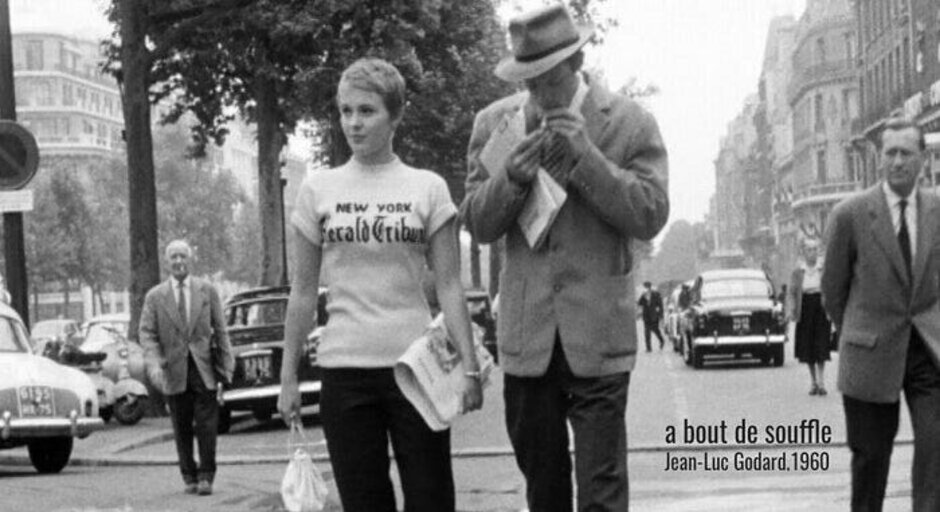
The founding publisher-editor of The Metro was a young guy in his 30s named Tom Moore. Five years earlier Tom had been the leg man for a shared-byline story about a spectacular bank robbery in Brooklyn. The story was published in Life Magazine…
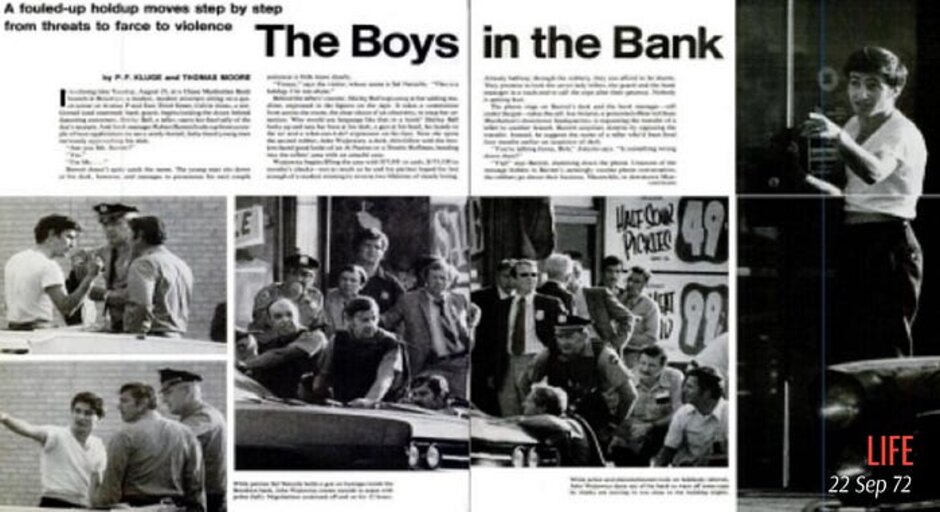
…and was quickly sold to Sidney Lumet’s production company, who came out with this classic movie, three years later:
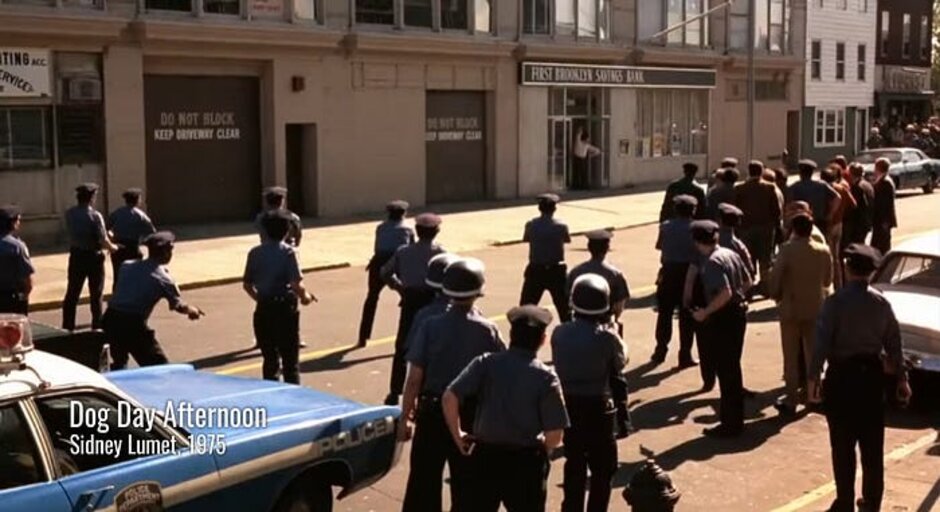
With his cut of the proceeds from the sale, Tom traveled to Paris to realize his teenage dream: to enjoy the good life in Paris with a beautiful French woman by his side, and to write about it.
With a couple of journalist cohorts, he founded a city magazine for Paris, a tabloid bi-weekly they launched in June, 1976. It was a good time for city magazines, which in the 70s were cropping up like mushrooms — Boston’s Phoenix, Chicago’s Reader, LA’s Weekly, etc. The ones that lasted were able to last by working the winning three-pronged combination: 1) comprehensive arts and culture coverage; 2) informed, relevant political pieces; 3) sexy classified ads.
Armed with that formula and a close group of writer friends, The Metro was launched in a quiet neighborhood of Paris, the 4th arrondissement.
Art director Christina de Liagre, in The Paris Metro 40th Anniversary Issue (Freelance Ink Books 2016), recalls:
Having the rue Pavée, the rue Rosiers and other streets in the Marais’ Jewish quarter in The Metro’s back yard was one of the real pleasures of our outpost at 31, rue des Francs-Bourgeois, where the renovated l’Hôtel d’Albret currently houses the Direction des Affaires Culturelles of La Mairie de Paris.
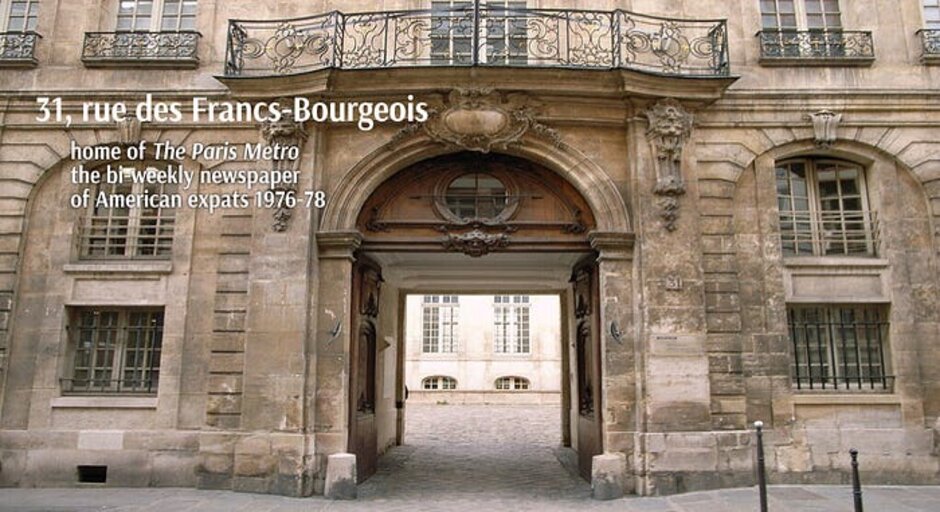
Not yet gentrified, as it is today, the Jewish Quarter had a texture of life that other neighborhoods lacked. The surrounding Marais had been dormant for decades and we were in town to wake it up! Remember naked co-ed nights at the Hamman Saint-Paul, now sadly converted into a clothing store? And meals at Goldenberg’s where the owner Jo would often sit down to reminisce [sic!] about the July 1942 roundup of the Jews. Now racks of “Morpho” jeans have replaced Jo’s famous chopped liver in a boutique called Le Temps des Cerises.

Goldenberg’s was a little pricey for me, but I hung out often on the main street, the rue des Rosiers, with its tabacs and its slightly cheaper (but just as good) delis:
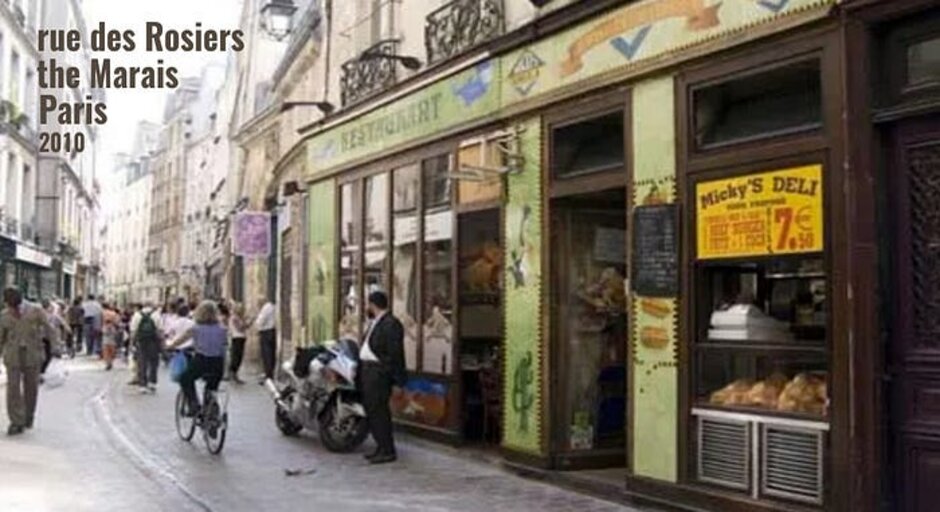
I usually hung out in the city until late in the evening, not forgetting to pack up in time to catch the last train to Neuilly, where I was staying with my American girlfriend and her French snobby-but-sexy artist boyfriend. Nights I missed the train I usually managed to share a bed with someone, courtesy of The Metro’s classifieds (which in its day worked better than Tinder).
Staying over in town gave me time to saunter up and down the 4th, down the Boulevards Saint-Michel and Saint-Germain des Prés and maybe sell a few extra copies. I did better at Les Deux Magots in the evenings than in the daytime, probably because the view of a braless mignonne asienne selling tabloids in a tight logo T-shirt struck customers as part of the romantic atmosphere.

I never actually did get to sit inside Les Deux Magots, but one evening I had enough on me to get a beer and a meal at the only place in town that knew how to make southwest chili, a place in the 5th called Top Banana. In keeping with their name, they always arranged banana slices, like flower petals, on top of their bowls.
It was here that I ran into the author of Inside the CIA, which was a newly published tell-all book about the nefarious doings of the intelligence agency in South America.
Philip Agee was sitting at the bar with Tom, Harry, and a couple of other hot-to-trot (young, white, male) staff journalists, conversing with great animation. There were other (young, white, male) journos in Top Banana, sitting at a table close by, but they were stringers, not staff writers, and therefore relegated to a distant group, who could only look over longingly at the elect seated at the bar.
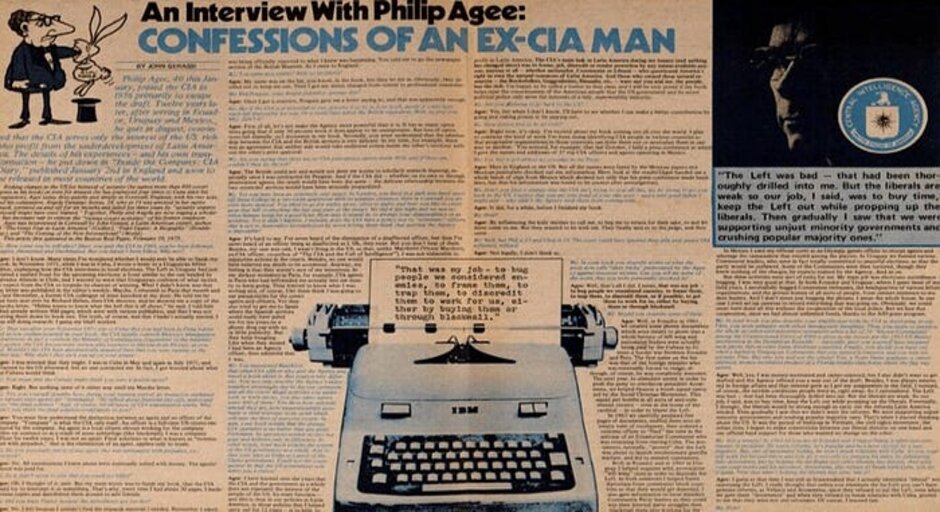
Knowing my place, I sat with the stringers. We got along fine, laughing and joking and downing one Stella Artois after another… After a bit, one of the guys, Doug I think was his name, pulled me close and whispered, “Hey, go find out what they’re talking about.” I suppose, being a cute harmless girl, the guys thought I could inveigle my way into their conversation just long enough to find out.
So I mosied over there. No one at the bar paid any attention to me, so I sat at Agee’s elbow patiently gazing up at him, like a starstruck fan waiting for an autograph. Finally he turned to actually look straight down at me.
“Um,” I started pretty shyly, “the guys over there would like to know if you have anything you’d like to share with them…any advice…?”
“Yeah!” he snorted. “Don’t go to Ecuador!”
Advice, I’m sorry to say, I failed to heed when my husband and I traveled there on our own special mission, thirty-three years later. But that’s another story.

- “The Story So Far, with Conductor John Wilson”
- “The Story So Far; Or, Conductor John Wilson—His Limits”
- “Cantara Christopher Gives Her Beloved Conductor John Wilson Crib Notes on Todd Field’s Screen Masterpiece, Tár: Love, Teshuvah, and Filipinos Will Save Classical Music (PDF)”
FULL DRESS // A gifted mesmerist—a sinister composer—a naive young conductor from the north…inspired by an episode from the life of Rachmaninoff // DOWNLOAD FREE BOOK POSTER